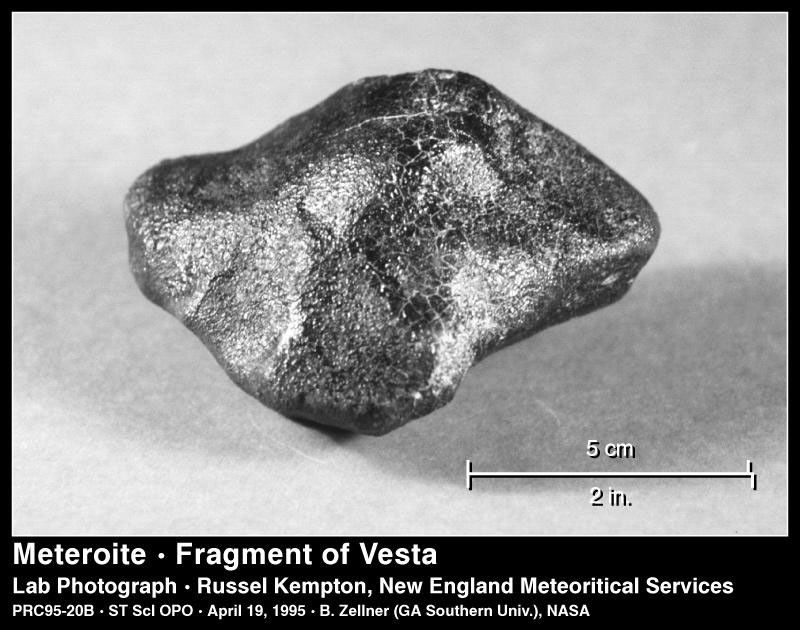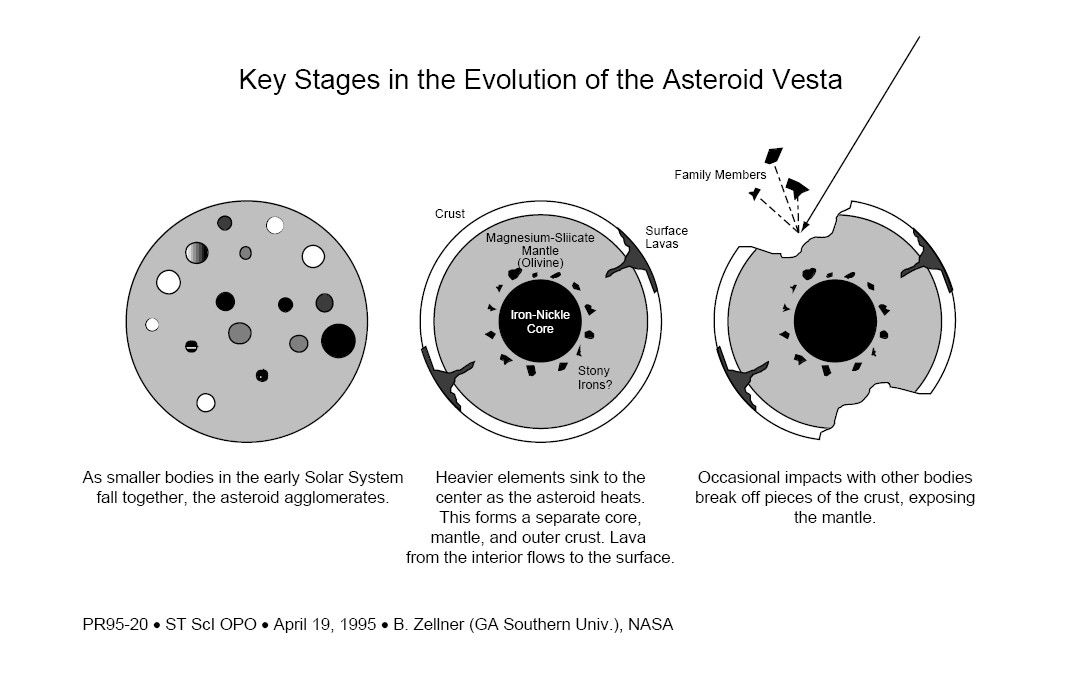1 min read
Hubble Follows the Rotation of the Asteroid Vesta

This is a NASA Hubble Space Telescope series of 24 images showing the full 5.34-hour rotation of the 325-mile diameter (525 kilometer) asteroid Vesta.
Hubble resolves features as small as 50 miles across, allowing astronomers to map Vesta's geologically diverse terrain. The surface is a complex record of Vesta's four billion-year history. Features include ancient lava flows, and a gigantic impact basin that is so deep, it exposes the asteroid's subsurface, or mantle.
This sequence was taken with Hubble's Wide Field Planetary Camera 2 between November 28 and December 1, 1994, when Vesta was at a distance of 156 million miles from Earth.
When combined with ground-based data, astronomers will be able to make the first geochemical map of Vesta's surface.
- Object NameObject NameA name or catalog number that astronomers use to identify an astronomical object.Vesta
- Release DateApril 19, 1995
- Science ReleaseAsteroid or Mini-Planet? Hubble Maps the Ancient Surface of Vesta
- CreditB. Zellner (Georgia Southern University) and NASA
Related Images & Videos

A Piece of the Asteroid Vesta
This meteorite is a sample of the crust of the asteroid Vesta, which is only the third solar system object beyond Earth where scientists have a laboratory sample (the other extraterrestrial samples are from Mars and the Moon). The meteorite is unique because it is made almost...
Share
Details
Claire Andreoli
NASA’s Goddard Space Flight Center
Greenbelt, Maryland
claire.andreoli@nasa.gov
































